Case Report: 09CA005
Maintenance worker dies when he falls into a baling machine that bales cardboard for recycling
Download a PDF to print this report:
Maintenance worker dies when he falls into a baling machine that bales cardboard for recycling (09CA005, PDF)
Summary
A 65-year-old Hispanic male maintenance worker working in a retail business warehouse died when he fell into and was crushed by a baling machine that bales cardboard for recycling. The victim was feeding cardboard into the machine hopper when the incident occurred. The victim had used a three-foot step ladder to gain access to the chute at the rear of the machine. The guard on the side of the chute did not fully enclose the chute to prevent entry. The machine was set on automatic mode with the electronic sensors blocked which meant that the machine constantly cycled. The company had a lockout/tagout program but it was not implemented by the victim. The company had a daily inspection log for the machine that was filled out by the operator. The CA/FACE investigator determined that in order to prevent future incidents, employers who use recycling machinery should ensure that:
- Guards around chutes are fully enclosed to prevent entry.
- Electronic sensors are not disabled or bypassed.
- The lockout/tagout procedure is enforced when servicing or maintaining the baling machine.
- Inspection of the baling machine is performed periodically by the supervisor in order to verify the machine's condition.
Introduction
On Thursday, July 13, 2009, at approximately 8:00 a.m., a 65-year-old Hispanic male maintenance worker died when he was crushed in a machine that bales cardboard for recycling. The CA/FACE investigator received notification of this incident on July 13, 2009, from the Monrovia District Office of the Division of Occupational Safety and Health (Cal/OSHA).
On July 16, 2009, the CA/FACE investigator inspected the incident site and conducted interviews with two managers of the facility. On July 30, 2009, the CA/FACE investigator received via mail the documents requested from the employer of the victim. On August 20, 2009, an interview was conducted with the victim's supervisor. On September 24, 2009, another inspection of the machine was conducted and a second interview with the victim's supervisor was held.
Employer
The employer of the victim had been in business for 150 years. The warehouse where the victim worked had 130 employees. The victim was working alone at the time of the incident.
Written Safety Programs and Training
The employer had a written Injury and Illness Prevention Program (IIPP) that addressed the specific safety matters of the business including lockout/tagout and machine safety. The company's training program for the bailing machine included the operation, daily inspection, safety reminders, maintenance, and a lockout/tagout program. Documents showed the victim had received this training with a refresher in March, 2009.
Worker Information
The victim was born in El Salvador and had been in the Los Angeles area for 24 years. The victim was a high school graduate and was fluent in English and Spanish. He had been employed with the warehouse for 15 years and was the daytime operator of the baling machine. His duties and responsibilities were to inspect, sort, and bale all waste cardboard and plastic. He also had to maintain the balers and compactors by keeping them clear of trash that could build up and create a malfunction.
Investigation
The machine involved in this incident was a cardboard baler called the "Balewel® 1600 series baler" by Balemaster®, a division of East Chicago Machine & Tool Company. This machine compacted cardboard into bales for recycling (Exhibit 1). The cardboard was fed into the machine through a hopper on top of the machine and a chute at the rear of the machine that received recycled cardboard off of a conveyor belt inside the warehouse (Exhibits
3 &
5). The chute had been constructed with side panels that did not provide total enclosure. When the machine was set in an automatic mode, the ram would automatically compress the cardboard every time it received a signal from the electronic sensors mounted on each side of the machine hopper (Exhibits
6 &
7).
When the cardboard being fed into the hopper reached the level of the electronic sensors, it blocked the light beam produced by the sensors, sending an electronic signal to the ram to activate. Every time the light beam was blocked, the ram would move forward and crush the cardboard into a bale. The manual mode required the operator to manually activate every action of the machine. After the cardboard was compressed into a bale, it was tied with wire and removed from the machine. According to the police report, the electronic sensors were blocked with small pieces of wood allowing the ram mechanism to continuously cycle.
On the day of the incident the victim was operating the machine, feeding cardboard into the hopper. A security camera noted the victim working in the area at 7:30 a.m. At approximately 8:00 a.m., the supervisor noted that the conveyor belt that fed recycled cardboard to the machine was off. He sent a co-worker to find the victim and ask him why the conveyor belt was turned off. The co-worker approached the machine and noted that it was running in the automatic mode. He then walked around the machine and spotted the victim’s hand protruding out of the bale area of the machine. He immediately shut the machine off and called 911. Fire fighters and paramedics removed the victim from the machine, and he was pronounced dead at the scene.
Cause of Death
The cause of death according to the death certificate was multiple traumatic injuries.
Recommendations / Discussion
Employers who use recycling machinery should ensure that:
Recommendation #1: Guards around chutes are fully enclosed to prevent entry.
Discussion: In this incident the victim was able to gain access to the point of operation of the machine through the missing guard at the base of the chute. The victim most likely reached into the machine to either push the cardboard further into the baler or the cardboard got hung up and he was trying to free it. In either case, he most likely lost his balance and fell into the machine. Guards around the chute are necessary to prevent entry of hands, fingers, or any part of the body into the point of operation. Had this guard been in place, the victim would not have been able to reach into the machine and this incident might have been prevented.
Recommendation #2: Electronic sensors are not disabled or bypassed.
Discussion: In this case, the machine was set on automatic mode. This meant that the ram that pushes the cardboard into a bale would not activate until it was sent a signal from the electronic sensors on each side of the hopper every time the light beam was blocked. According to the police report, when they did their investigation they found these sensors blocked by small pieces of wood. This meant that the ram continually cycled as the light beam was blocked. The continuous cycling of the ram crushed the victim when he fell into the hopper. Had the electronic sensors not been bypassed, the ram would have not cycled and crushed the victim.
Recommendation #3: The lockout/tagout procedure is enforced when servicing or maintaining the machine.
Discussion: Although the employer in this case had a lockout/tagout program, it is not clear why the victim did not apply it before he reached into the point of operation of the machine. Lockout/tagout programs are used to protect employees against accidental or inadvertent operation of a machine when such operation could cause injury or death. A lockout/tagout program addresses all the forms of hazardous energy that needs be deenergized, isolated, blocked, and/or dissipated before workers begin any installation, maintenance, service, or repair work. The method of energy control depends on the form of energy involved and the available means to control it. Had the victim implemented the company’s lockout/tagout procedure before reaching into the machine, this incident could have been prevented.
Recommendation #4: Inspection of the baling machine is performed periodically by the supervisor in order to verify the machine’s condition.
Discussion: In this case, the company had a daily baler inspection log that the operator filled out. In order to verify the baling machine’s condition and safety compliance, the supervisor should have periodically performed this inspection in order to catch any anomaly previously overlooked by the machine operator. Had the supervisor periodically inspected the machine, the missing guard and covered electronic sensor might have been discovered and this incident might have been prevented.
Exhibits
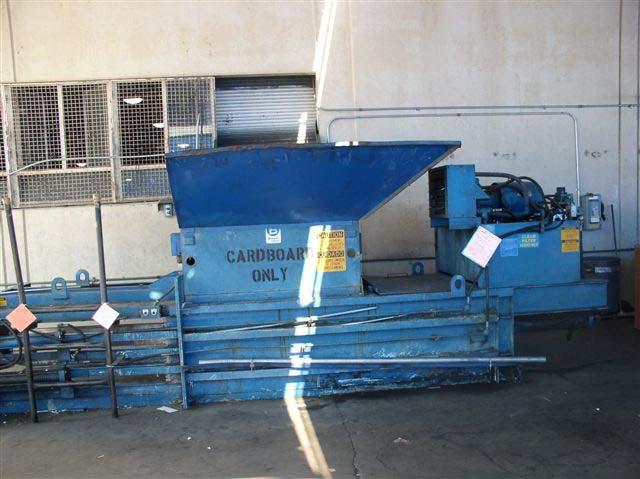
Exhibit 1. The cardboard baler machine involved in the incident.
Return to Investigation
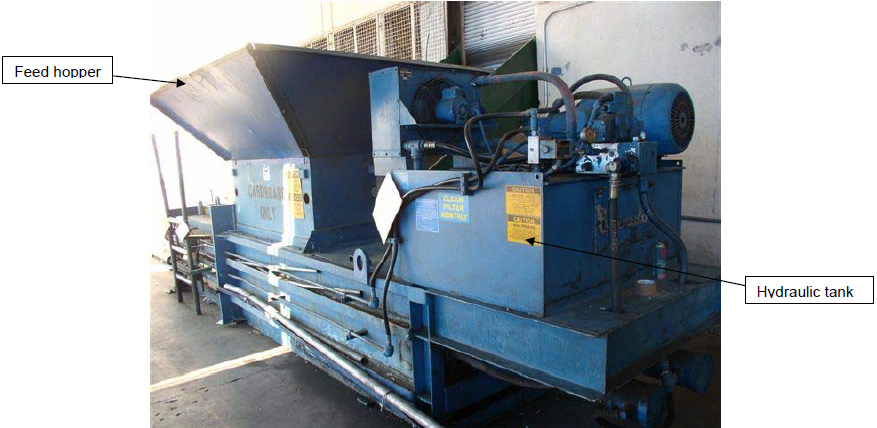
Exhibit 2. The cardboard baler showing the hydraulic system and feed chute.
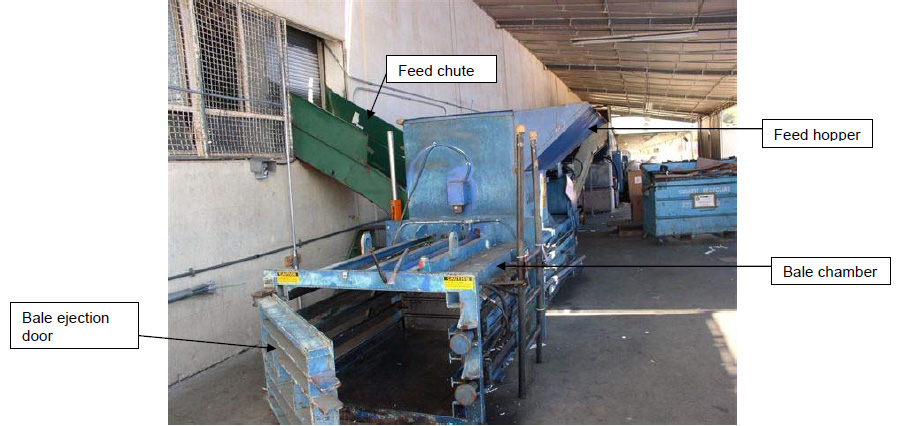
Exhibit 3. The cardboard baler showing the feed chute and chamber where the recycled bales of cardboard were formed.
Return to Investigation
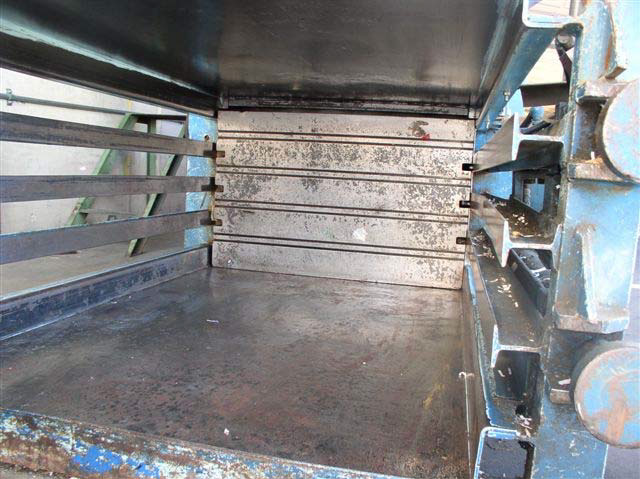
Exhibit 4. The chamber where the victim was found.
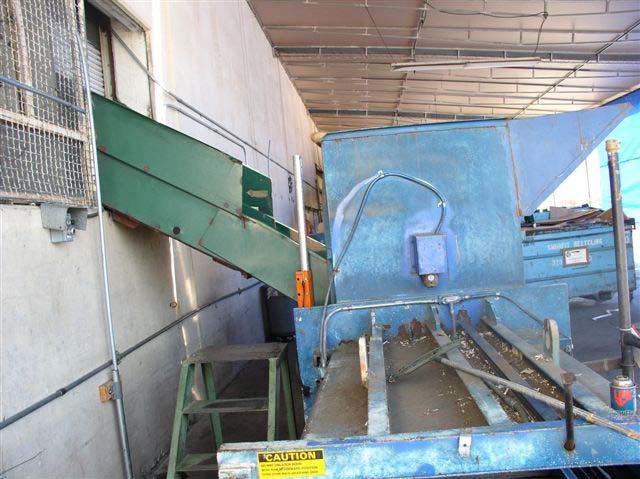
Exhibit 5. The feed chute with side panels missing and the three-foot step ladder used by the victim.
Return to Investigation
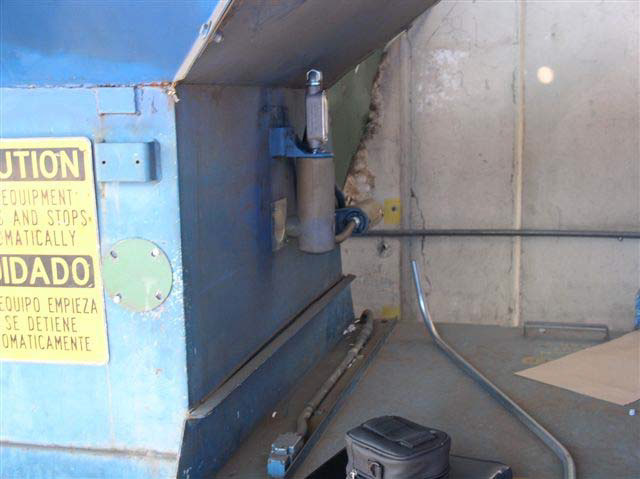
Exhibit 6. The electronic sensor on the feed hopper.
Return to Investigation
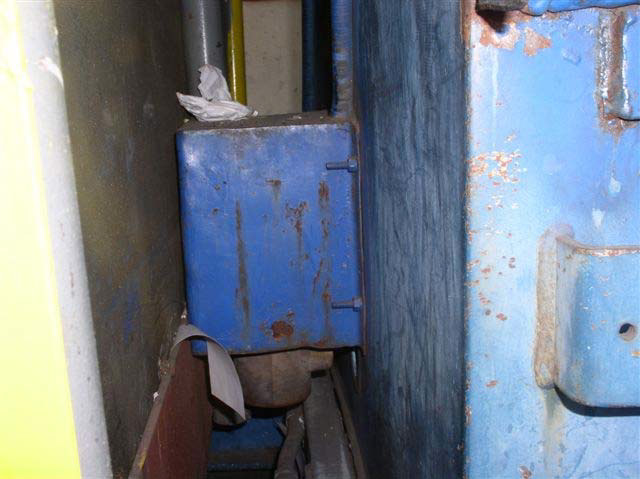
Exhibit 7. The electronic sensor on the opposite side of the feed hopper.
Return to Investigation
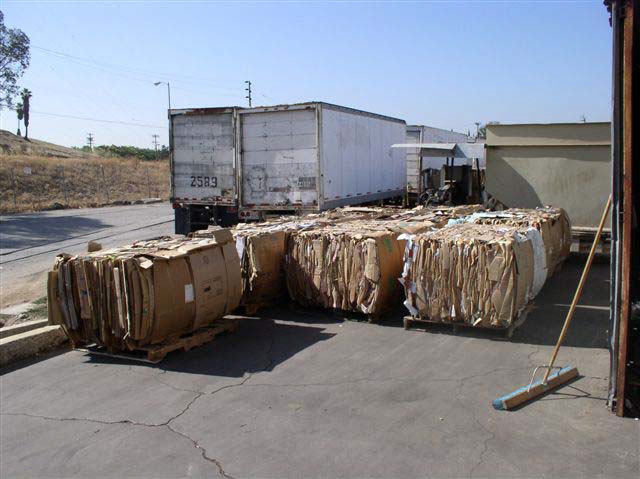
Exhibit 8. The bales of recycled cardboard produced by the machine involved in the incident.
References
Division of Occupational Safety and Health - Title 8 regulations - Subchapter 7 -
General Industry Safety Orders
Group 8. Points of Operation and Other Hazardous Parts of Machinery - Article 61.
Compaction Equipment
§4350. Scope.
§4351. Definitions.
§4353. Stationary Compaction Equipment and Balers.
§4355. Operating Rules for Compaction Equipment.
Group 6. Power Transmission Equipment, Prime Movers, Machines and Machine Parts
-Article 41. Prime Movers and Machinery
§4002. Moving Parts of Machinery or Equipment.
Group 2. Safe Practices and Personal Protection - Article 7. Miscellaneous Safe Practices
§3314. The Control of Hazardous Energy for the Cleaning, Repairing, Servicing,
Setting-Up, and Adjusting Operations of Prime Movers, Machinery and Equipment,
Including Lockout/Tagout.
Helper on a steel-slitting machine dies when he is caught between sheet metal and the rewind cylinder (05CA003, PDF) - California Case Report #05CA003
NIOSH Publication No. 2003-124: Preventing Deaths and Injuries While Compacting or Baling Refuse Material - Centers for Disease Control and Prevention (CDC), National Institute for Occupational Safety and Health (NIOSH)
Machine Safety - NIOSH Safety and Health Topic Page
Authors
Hank Cierpich, FACE Investigator
Robert Harrison, MD, MPH, FACE Project Officer
Laura Styles, MPH, Research Scientist
January 18, 2010